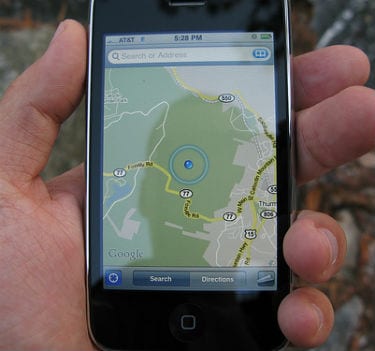 With all the iPhones, iPads, and other smartphones field service techs are carrying out into the field, is there still any need for stand-alone GPS systems?
With all the iPhones, iPads, and other smartphones field service techs are carrying out into the field, is there still any need for stand-alone GPS systems?
Since almost every smartphone comes equipped with GPS capabilities — most offer spoken turn-by-turn directions, if you want — it would seem that simply ditching those $200 devices represents easy cost-savings for field service organizations.
Not surprisingly, GPS device manufacturers like TomTom and Garmin have struggled in recent years. Yet they haven’t gone away — and in fact, Garmin recently celebrated record Q4 results and announced a deal with Suzuki to produce custom in-car “infotainment” systems.
Multi-tool limitations
Here’s why both mobile apps and navigation devices can co-exist in the marketplace. Imagine the iPhone as a Swiss Army knife — it has a lot of great tools in it, but usually not the best tool. An iPhone can go on the Web, but it hasn’t totally killed the desktop computer. It can make a phone call, but it hasn’t entirely killed the landline. Same goes for its GPS — it’s a great tool, but it isn’t necessarily the best.
In fact, Skidmore College recently conducted a GPS accuracy test with a Garmin and two iPhones, and the results found that while the GPS on iPhones was indeed very accurate, the Garmin was even better. For service techs in the field, there may be scenarios where getting to a job is a little more complicated than finding driving directions to the grocery store. In those cases, the GPS unit still has value. For a field service manager, it’s important to consider how important top-notch accuracy and usability is for your techs. (Both TomTom and Garmin actually sell iPhone apps.)
ZDNet wrote a piece last year on the pros (larger screen size, a better UI, stronger integration with other in-car devices, longer battery life) and cons (inefficient updating, a lack of apps, high costs) of a dedicated GPS vs. a smartphone, focusing on its use in-vehicle. The do-it-all iPhone (and its ilk) is certainly an important weapon in the modern service tech’s belt. We’ll see whether it can ever entirely replace the GPS unit.
More: TomTom Rolls Out Insurance Discounts for Tracked Drivers; Personal Navigation Device Market in Fast Decline.
Click here to download a free whitepaper, “Five Steps to Make Field Service Profitable.”

Share this: